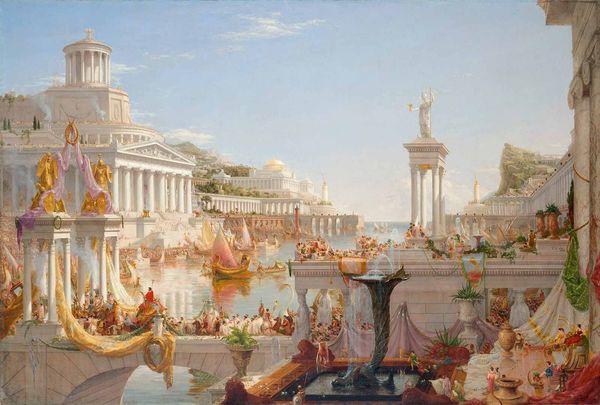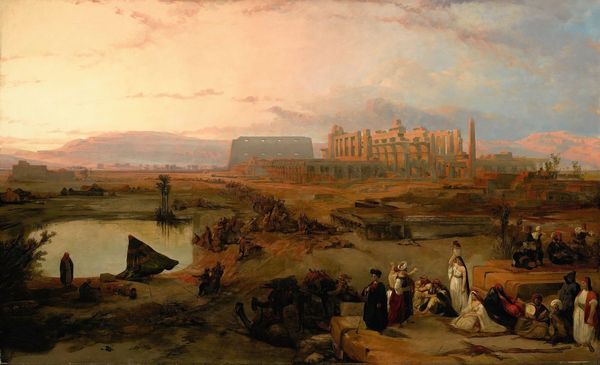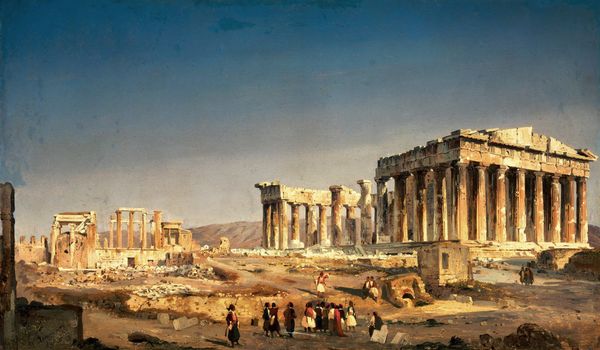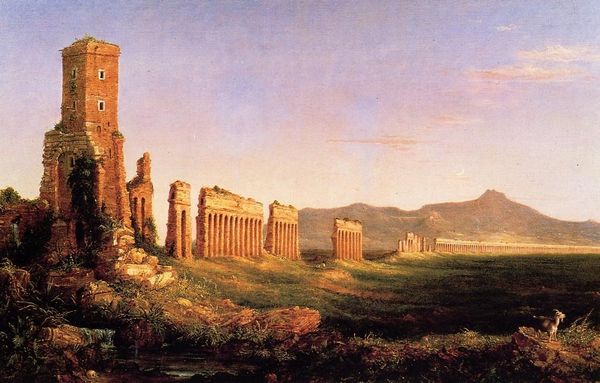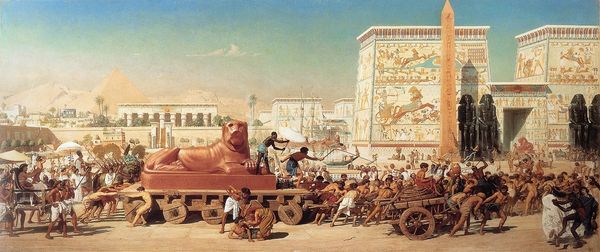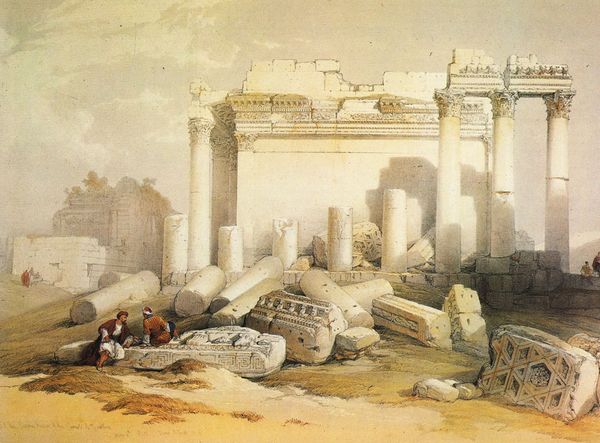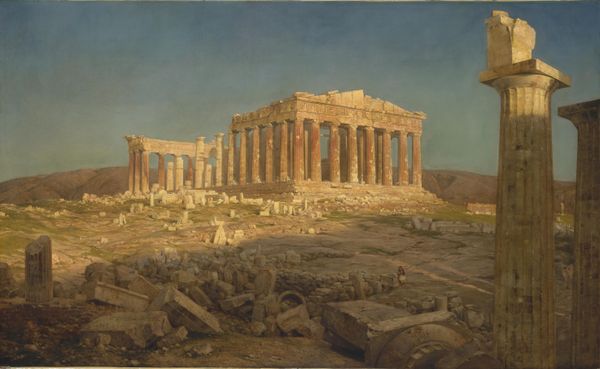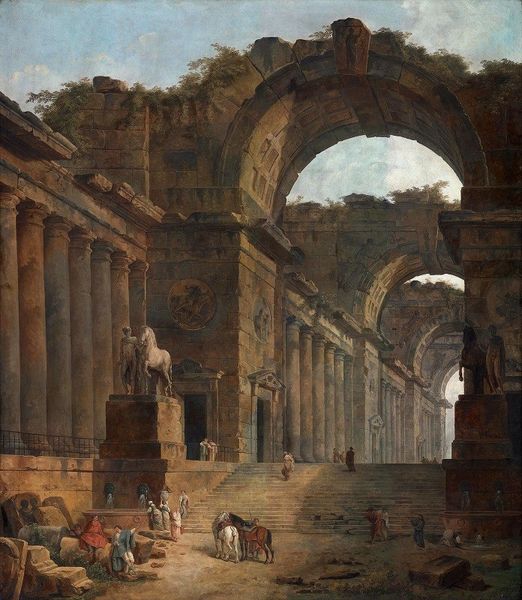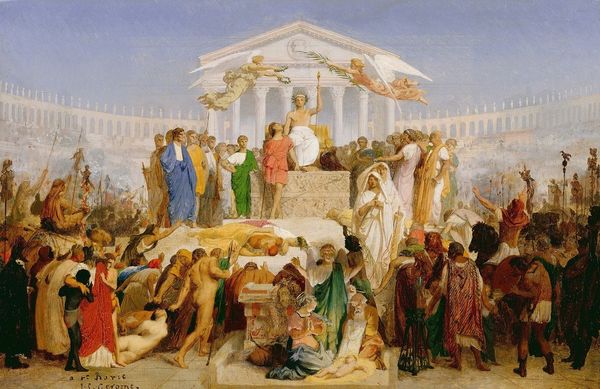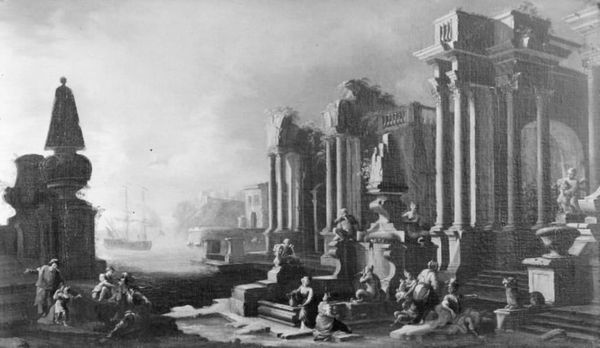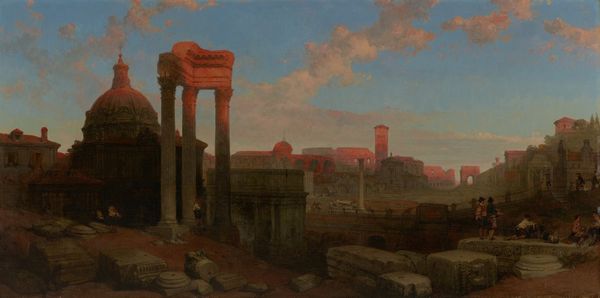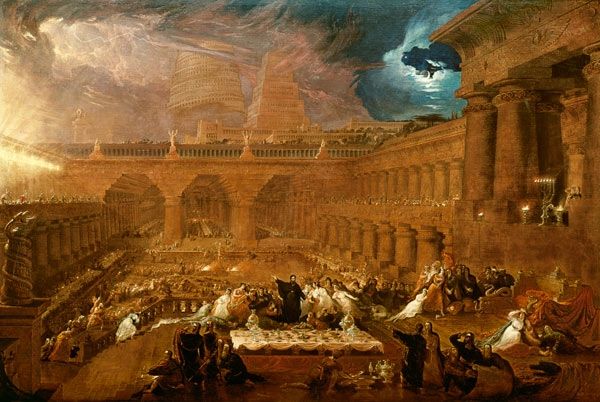
painting, oil-paint
#
narrative-art
#
painting
#
oil-paint
#
landscape
#
ancient-egyptian-art
#
holy-places
#
figuration
#
romanticism
#
history-painting
#
academic-art
Copyright: Public domain
Curator: David Roberts' "Departure of the Israelites," created around 1830, dramatically depicts this iconic biblical event in oil on canvas. Editor: What strikes me immediately is the sheer density of the composition; the claustrophobia created by the architectural mass pressing down on the figures. It evokes a palpable sense of being overwhelmed. Curator: Absolutely. Roberts masterfully blends history painting with the aesthetics of Romanticism and the developing interest in ancient Egypt. One could even argue this is a type of orientalism, using an event that has significance for European viewers and interpreting it on canvas, in their terms. The narrative is one of liberation, of course, and its importance to later interpretations of power dynamics within Jewish history is well known. Editor: I’m drawn to how Roberts employs color. The muted ochres and browns create a sense of antiquity, but that intense white light in the center pulls you into the drama. There is a powerful, almost diagonal line across the picture plane. Curator: Indeed. This painting can be contextualized within broader dialogues of power, religion, and emancipation that characterized much of the Romantic era's political discourse. Roberts' artistic choices actively position the Israelites' exodus within these socio-political considerations, speaking to abolition and reform back in England. Editor: Thinking about that light and shadow again—it isn’t just illumination, but a key component of the work's structure. The balance isn't just narrative; it’s fundamentally about how Roberts uses these tonal contrasts to direct the viewer’s gaze and enhance the emotional impact of such a well-known scene. Curator: Considering the period, Roberts reflects the historical and religious understandings, even perhaps, projecting British anxieties onto this canvas. Editor: A great way to put it, it's like looking at both the event and how history is formed, molded, and received through technique and perspective.
Comments
No comments
Be the first to comment and join the conversation on the ultimate creative platform.
